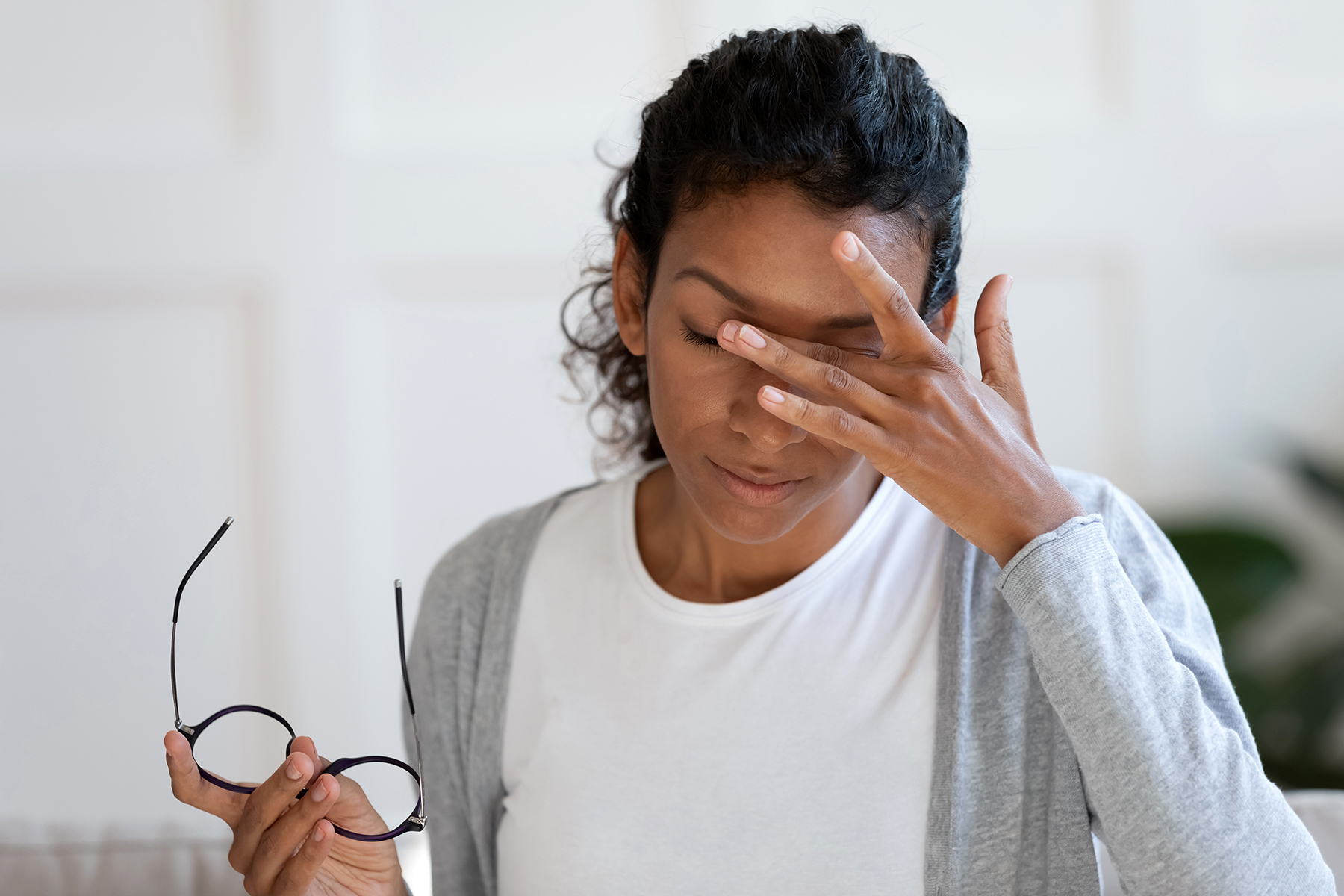Stopping Styes

Ouch! That painful, red bump on your eyelid might be a stye – a bacterial infection of the oil glands in your eyelid. They often look like pimples at the edge of the eyelid, but styes can also form on the inside of the eyelid. They can be very painful, but the dramatic effect on one’s appearance is usually what causes people the most distress. Styes can cause significant swelling of the eyelid and the bump itself can be quite unsightly. People with styes want to know how to make them disappear as soon as possible.
There are many potential causes for styes. Touching your eyes with unwashed hands, leaving eye makeup on overnight, or using old cosmetics can introduce bacteria into the oil glands. However, less than perfect hygiene isn’t always the culprit. Stress and poor sleep may lower your immunity, increasing the risk. There has been an increased incidence of styes associated with the use of face masks since the start of the COVID-19 pandemic, as masks cause warm air from normal breathing to blow up toward the eyes. This irritates the oil glands in the eyelids, creating just the right micro-environment for the development of a stye. Rosacea and dry eye are also under recognized, yet significant causes, especially if they tend to be recurrent.
Small styes usually respond well to frequent warm compresses. If treated early on, they often resolve with oral antibiotics. If styes are recurrent, a longer course of antibiotics can help lessen their frequency. Staying on a long course of antibiotics can have many downsides, though, including the build-up of bacterial resistance and the depletion of healthy bacteria in the gut. Recurrent styes are often the result of chronic dry eye and require long-term dry eye management. If the stye does not fully resolve and turns into a hard nodule, it can be surgically excised. Surgical excision will get rid of the unsightly bump quickly. However, the procedure itself can be painful and may cause damage to the oil glands, which can increase the risk for dry eye in the future.
What if your stye makes you want to hide behind giant sunglasses and you wish that something could help to make it go away ASAP? IPL (Intense Pulsed Light) is what you need! After a single treatment of IPL, discomfort and swelling is reduced within hours and the stye disappears within days. IPL is a light-based treatment that is widely used in eye care for the treatment of dry eye disease and in dermatology for skin rejuvenation and the treatment of rosacea. Its benefits are numerous, and IPL is a safe and quick procedure with no downtime, requiring no cutting and preserving the function of the delicate oil glands in the eyelid. IPL treats the underlying cause of styes, so it will also reduce the likelihood of developing styes in the future. It can also treat styes that have evolved into hard nodules, although they may require more than one treatment and generally take longer to resolve.
Don’t let a stye get you down. If you’ve discovered one has popped up, seek out an eye doctor with IPL so that when it’s time to take those fall family photos, jump on that Zoom call, or enjoy that holiday party, you’re back to looking and feeling your best.
Samantha K. McPherson, OD, FAAO
Founder of Dry Eye Center of NC, a subspecialty clinic of McPherson Family Eye Care.

